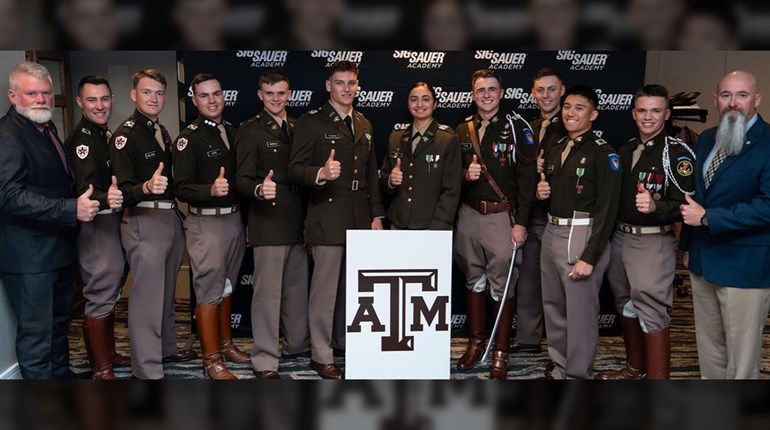
Plenty of us cut our teeth on airguns when we were young. Very few of us shot our eye out. Daisy and co. taught us the fundamentals of gun safety while providing a less-than-permanent consequence if a rule was accidentally broken. As added bonuses, BB guns cost Dad next to nothing to keep us shooting all afternoon. He was even happier that our shooting didn’t disturb his nap. And that’s why adults should continue to use airguns as training tools. They’re fun, cheap, neighbor-friendly and effective.
One reason why most shooters seldom shoot offhand is because we’re bad at it. We’ve been taught to use a rest our whole lives, and generally that’s good advice. But there are three main reasons for practicing shooting offhand: 1. Sometimes you must shoot too quickly to take a rest or seek cover in defensive situations; other times there is no rest available; 2. Offhand shooting is challenging and fun; and 3. If you can shoot offhand, you can shoot using any technique—therefore, offhand practice makes you a better shot.
But in order to maximize your practice with an airgun—or any gun—it’s best to use reactionary targets that instantaneously reveal if it’s a hit or a miss. After a hit your brain will record what you did right, and with enough repetition, it will become ingrained. But many traditional shooting ranges allow only boring paper targets. So another huge advantage of practicing with an air guns is the diversity of targets at which you can safely shoot, as well as the sheer number of locations to do so. (Check your local laws before shooting an airgun inside city limits.)
For example, my favorite, inexpensive offhand training exercise is to hang five to 10 soda cans from tree limbs in my backyard. Hang them at various distances and heights above ground, and make sure you can see and shoot them from the comfort of your deck. (That’s key!) Fill a few with water to make them swing in the wind more or less than others for variation. Now riddle them with holes.
Mentally pick out a can moments before shooting, identify it, and aim the airgun while simultaneously flicking the safety off. Then squeeze the trigger and doggedly follow through. Concentrate not on the can itself but on the small “o” in Coors. Realize you are never going to keep the gun perfectly steady, so work with your wobble. If you hear the pop and rattle of pellet hitting can, try to recollect your sight picture and take a mental snapshot of it so you can replicate it. If you miss, forget it. Then randomly choose another can and rattle its brain.
If you’re more of a tactical person who wishes to practice for home defense, wait until night or build a backstop in your basement. (That’s the glory of a whisper-quiet airgun.) Then find a target with your tactical light, identify it, raise the handgun or rifle and make it wish it had never been made of callous aluminum.
Just like centerfire bullets, but on an abbreviated scale, you’ll find you have to aim higher for targets at longer ranges, so this can help you get an understanding of using your reticle and sights for holdovers and dope—on the fly. In just several days of practice you’ll see improvement in marksmanship, gun handling and confidence.
Occasionally, mix in some resting and field positions. Use a lawn mower or deck rail as a makeshift barricade or rest. Shoot on the move. Play games with yourself like seeing how fast you can hit all the cans. Then challenge a buddy or a family member. A little friendly wagering to increase the pressure never hurts—so long as you don’t lose your lunch money. Even if you do, you’ll have fun knowing you can shoot a tin full of pellets for around $5.
New Airguns for Grown-Ups
Not too many moons ago, SIG SAUER only made firearms. These days it still makes wonderful shotguns, rifles and handguns for sportsmen and our country’s defenders, but it also makes ammunition, optics, suppressors and … air rifles.
Indeed, its line of air rifles—called Advanced Sport Pellet Pistols and Rifles—are intended for adults to simulate models of SIG's centerfire guns for training purposes. Its MCX and MPX models are .177- or .22-caliber, CO2-operated airguns that look much like the company’s sub-guns of the same names. The units look cool, but more importantly, feel like the real thing. They fire a magazine of 30 pellets as fast as you can pull the trigger and cost $200-$300.
Need to practice your handgunning but can’t afford neither the ammo nor the time off work to go to the formal gun range? SIG makes airguns that emulate its vaunted P226 and P250 series handguns. Powered by common 12-gram CO2 cartridges, they shoot pellets semi-automatically, up to 500 fps. Like the rifle, its body and controls look and feel exactly like the real thing, so sight picture acquirement, loading/unloading and control manipulation can be practiced efficiently. Using them will absolutely make you a better, quicker and more intuitive shooter without upsetting the neighbors, wrecking your hearing, or breaking the bank. Around $100. www.sigsauerasp.com







































